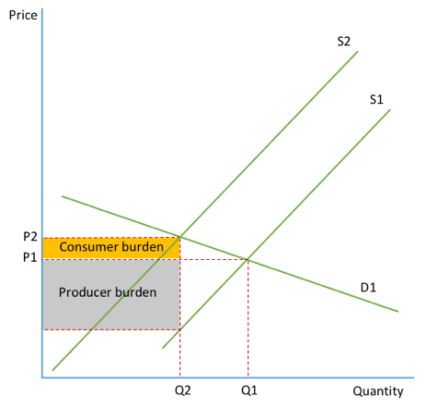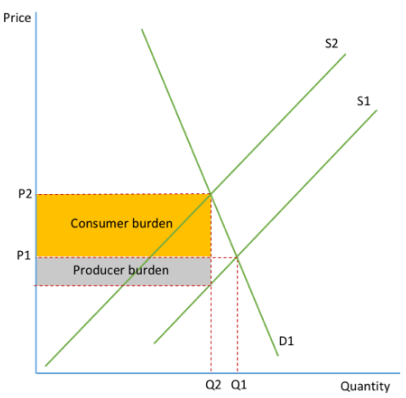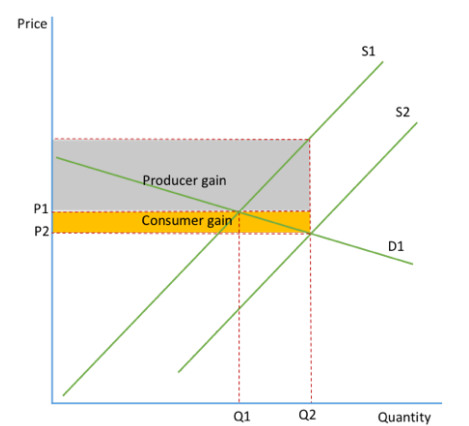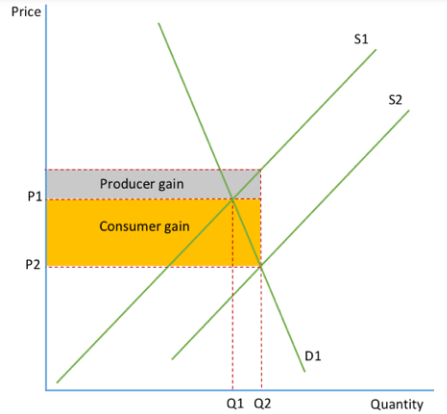1.2.3 Price, income and cross elasticities of demand
1/20
There's no tags or description
Looks like no tags are added yet.
Name | Mastery | Learn | Test | Matching | Spaced |
|---|
No study sessions yet.
21 Terms
ELASTICITY OF DEMAND
attempt to measure the responsiveness of quantity demanded to changes in other variables: its own price, the price of other goods and real income
If a good is elastic, it is relatively responsive and if it is inelastic, it is relatively unresponsive
PED
PRICE ELASTICITY OF DEMAND is the responsiveness of quantity demanded to a change in the price of the good
%change in quantity demanded/%change in price
NUMERICAL VALUES OF PED
Most values of PED are negative, since a rise in price leads to a fall in output- look at the integer alone, disregarding the negative sign
Unitary elastic PED is where PED=1: quantity demanded changes =% as price-This would be shown as a reciprocal curve
Relatively elastic PED is where PED>1: quantity demanded changes by a larger % than price so demand is relatively responsive to price-The curve will be more sloping
Relatively inelastic PED is where PED<1: quantity demanded changes by a smaller % than price so demand is relatively unresponsive to price-The curve will
be steep
Perfectly elastic PED is where PED=infinity: a change in price means that quantity falls to 0 and demand is very responsive to price- horizontal line
Perfectly inelastic PED is where PED=0: a change in price has no effect on output so demand is completely unresponsive to price- vertical line
FACTORS INFLUENCING PED
Availability of substitutes
Time
Necessity
How large of a % of total expenditure
Addictive
AVAILABILITY OF SUBSTITUTES
If a product has lots of substitutes (for example instead of buying Coke you could buy Pepsi), people will switch to other products when prices go up- so PED will be elastic
If there are no substitutes, people will buy that good even if prices go up- so PED will be inelastic
TIME
The longer the time, the easier it will be for a person to find an alternative product/supplier of the product so the more elastic the good is
In the short term, many goods are inelastic as people may not even notice the price difference
NECESSITY
A good that is essential for basic living, leading to inelastic demand as consumers will purchase it regardless of price changes.
HOW LARGE OF A % OF TOTAL EXPEDINTURE
If a good/service represents a very small % of a person's expenditure, a significant increase in price will have a relatively small impact on how much they buy of that product so it will be inelastic e.g. matches.
ADDICTIVE
If a product is addictive, then the demand curve will be inelastic- No matter how high prices are, people will still buy the good to fulfill their addiction.
SIGNIFICANCE OF PED
The PED, along with the PES, determine the effects of the imposition of indirect taxes and subsidies
SIGNIFICANCE OF PED- ELASTIC TAX
The more elastic the demand curve, the lower the incidence of tax on the consumer.
This means that when PED is elastic, a tax will only lead to a small increase in price and the supplier will have to cover the majority of the cost of the tax.

SIGNIFICANCE OF PED- INELASTIC TAX
When demand is inelastic, the tax will be mainly passed onto the consumer.
Since consumers are relatively unresponsive to the price of this good, quantity demanded will not fall by a large amount.
This means that the tax will be ineffective at reducing output-but it also means that there is higher tax revenue for the government (the more inelastic the demand curve, the higher the tax revenue for the government)

SIGNIFICANCE OF PED- ELASTIC SUBSIDY
With a subsidy, elastic demand means that the consumer sees a small fall in price whilst the producer gains a lot in extra revenue
also means there is a large change in output following a subsidy
gov has to spend more for subsidies on elastic goods.

SIGNIFICANCE OF PED- INELASTIC SUBSIDY
The more inelastic demand, the more the price falls
little change in output
subsidies on goods with inelastic demand are ineffective at increasing output- cheaper for the gov to impose since output increases by less and so the gov have to pay the subsidy on less goods

PED AND REVENUE
elastic demand curve: A decrease in price leads to an increase in revenue and an increase in price leads to a decrease in revenue
inelastic demand curve: A decrease in price leads to a decrease in revenue and an increase in price leads to an increase in revenue
unitary elastic curve: a change in price does not affect total revenue
YED
INCOME ELASTICITY OF DEMAND is the responsiveness of quantity demanded to a change in income
% change in quantity demand/% change in income
NUMERICAL VALUE OF YED
An inferior good is when YED<0: a rise in income will lead to a fall in demand for the good. For example, Tesco Value goods are inferior goods.
A normal good is when YED>0: a rise in income will lead to a rise in demand for the good.
A luxury good is a type of normal good, when YED>1.
Goods can also be as elastic or inelastic in income.
If the integer is >1, the good is elastic
If the integer is <1, the good is inelastic and this tends to be necessities.
SIGNIFICANCE OF YED
It is important for businesses to know how their sales will be affected by changes in the income of the population- if the economy is improving and people's incomes are rising it is vital that a business knows whether this is likely to increase their sales or not
It may have an impact on the type of goods that a firm produces- during times of prosperity, firms might produce more luxury goods and less inferior good
XED
CROSS ELASTICITY OF DEMAND is the responsiveness of demand for one product (A) to the change in price of another product (B)
%change in quantity demanded of A'/%change in price of B
NUMERICAL VALUES OF XED
Substitutes are where XED>0: an increase in the price of good B will increase demand for good A. For example, Coca Cola and Pepsi are substitutes
Complementary goods are where XED<0: an increase in the price of good B will decrease demand for good A. One example is DVDs and DVD players
Unrelated goods are where XED=0: a change in the price of good B has no impact on good A
The size of the integer represents the strength of the relationship: the larger the number, the stronger the relationship between the two
SIGNIFICANCE OF XED
Firms need to be aware of their competition and those producing complementary goods- they need to know how price changes by other firms will impact them so they can take appropriate action